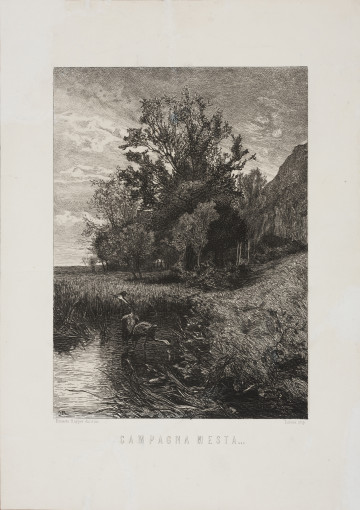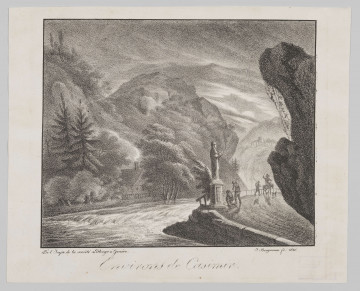
Campagna mesta | Sad landscape of Campania
1870
National Museum in Szczecin
Part of the collection: European painting
The 17th century in the Netherlands has been described as a golden age. Rapid economic development ensured the prosperity of the citizens of the young state, independent from its previous protector, Spain. The abundance of their wallets influenced the comfort of their lives. This also involved the need for comfortable, aesthetically pleasing residences. The demand for paintings increased and they became an indispensable element of decoration of cosy, not very spacious bourgeois interiors. Both the forms and themes of painting became enormously diverse.
In order to gain mastery and maintain the interest of their clients, numerous Dutch artists specialized in new subjects of representation. Small-sized landscapes with evocative moods, painted with a quick technique, were very popular. They suited almost any interior, and the Dutch bourgeoisie, who acquired their wealth through their own labour rather than inheritance, were willing to spend modest sums on views of “pleasant places”, or landscapes.
The small, atmospheric Riverside Landscape from the Lublin collection is a characteristic example of this type of painting and an expression of artistic and collector fashion for small, skilfully painted pictures. The composition refers to traditional solutions with a backstage perspective of high wooded escarpments in the foreground opening onto a picturesque Italian alpine landscape.
It is difficult to determine and impossible to read unambiguously what the figures of the staffage do. It seems that they are simply wanderers. This motif symbolized the changing fortunes and wanderings of man through life, but at the same time referred to the actual experience of travel. The Dutch traveling for trade got to know and saw Italian landscapes. Having their painted versions at home, they could contemplate the familiar views while planning their next expeditions.
Magdalena Norkowska
Author / creator
Dimensions
cały obiekt: height: 36 cm, width: 28 cm
Object type
painting
Technique
oil technique
Material
canvas, oil-based paint
Creation time / dating
Creation / finding place
Owner
The National Museum in Lublin
Identification number
Location / status

1870
National Museum in Szczecin

1818
National Museum in Lublin

1760 — 1780
National Museum in Lublin
DISCOVER this TOPIC
National Museum in Szczecin
DISCOVER this PATH
Educational path